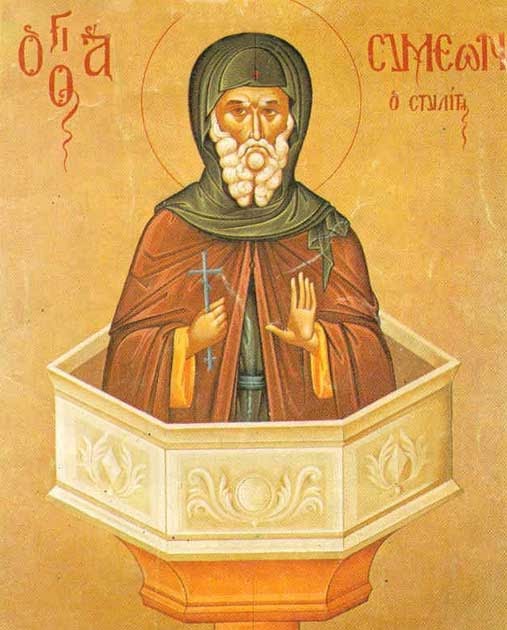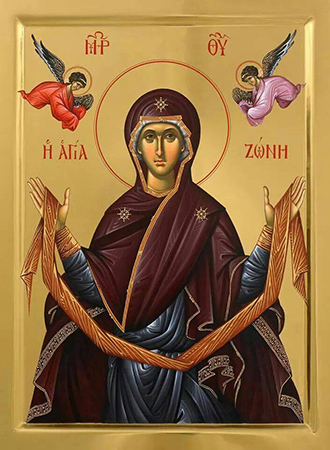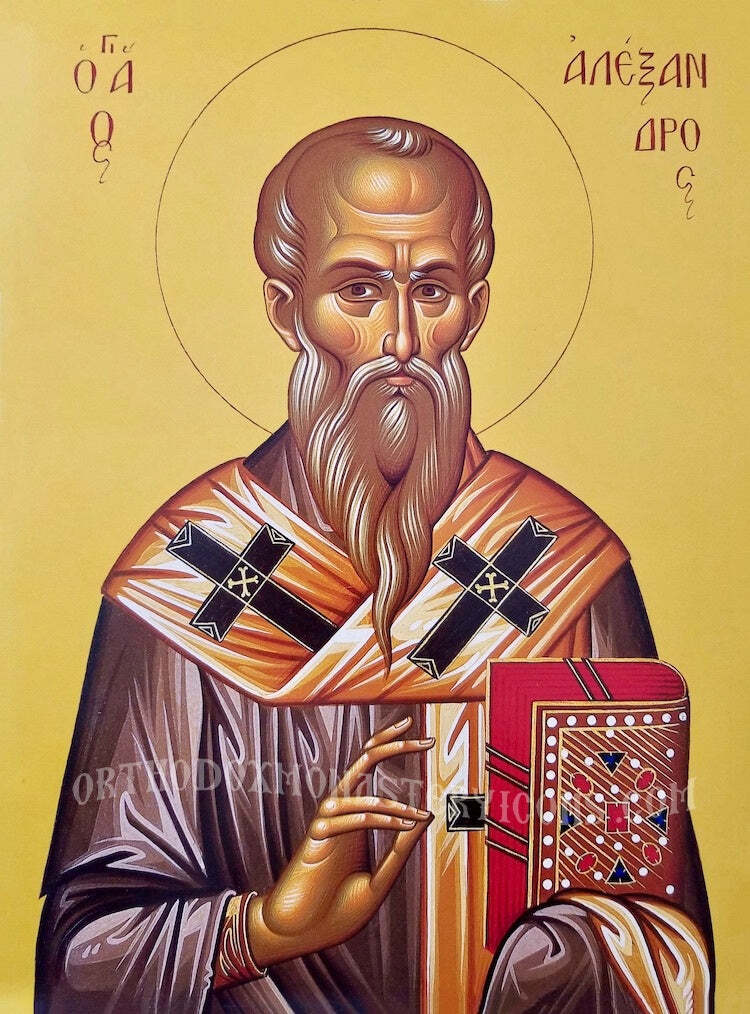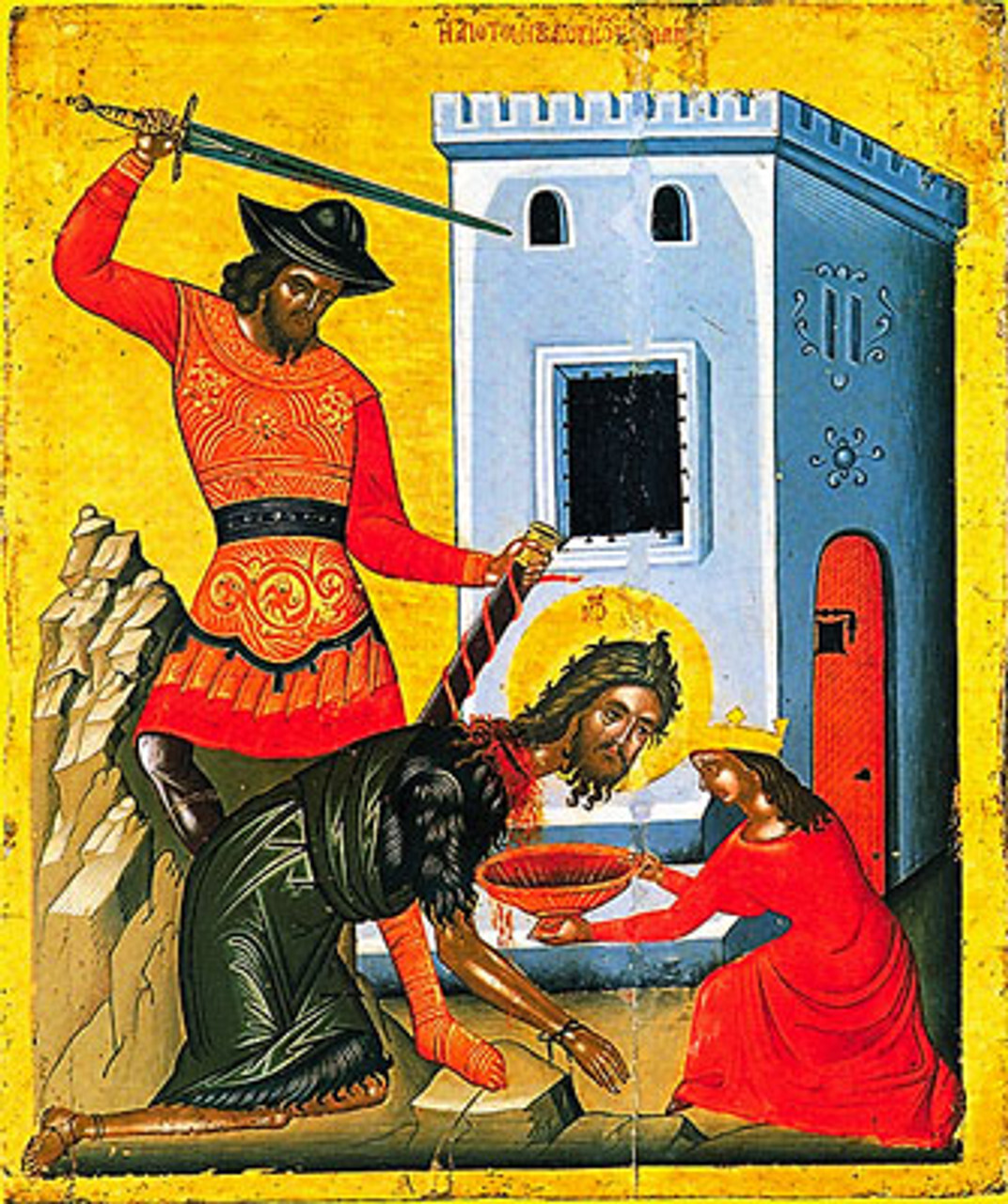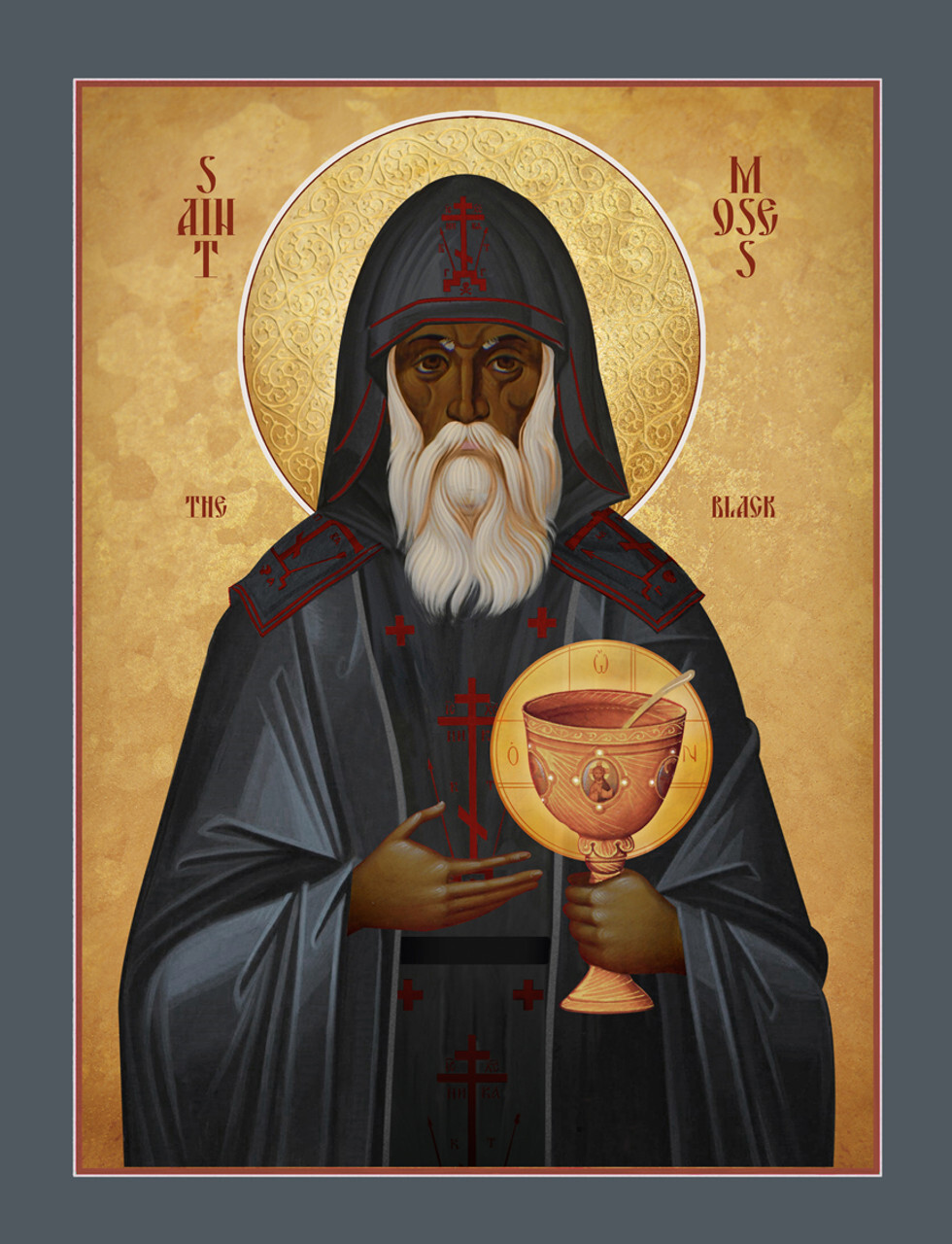Saint Moses lived in Egypt during the fourth century. He was an Ethiopian, and since he was black of skin he was called “Murin” (meaning “like an Ethiopian”). In his youth he was the slave of an important man, but after he committed a murder, his master banished him, and he joined a band of robbers.
Because of his bad character and great physical strength, they chose him as their leader. Moses and his band of brigands were feared because of their many evil exploits, including murders and robberies. People trembled at the mere mention of his name.
Moses the brigand spent several years leading a sinful life, but through the great mercy of God he repented, left his band of robbers and went to one of the desert monasteries. Here he wept for a long time, begging to be admitted as one of the brethren. The monks were not convinced of the sincerity of his repentance, but the former robber would neither be driven away nor silenced. He continued to implore that they accept him.
Saint Moses was completely obedient to the hegoumen and the brethren, and he poured forth many tears of sorrow for his sinful life. After a certain while Saint Moses withdrew to a solitary cell, where he spent his time in prayer and the strictest fasting.
Once, four of the robbers of his former band descended upon the cell of Saint Moses. He had lost none of his great physical strength, so he tied them all up. Throwing them over his shoulder, he brought them to the monastery, where he asked the Elders what to do with them. The Elders ordered that they be set free. The robbers, learning that they had chanced upon their former ringleader, and that he had dealt kindly with them, followed his example: they repented and became monks. Later, when the rest of the band of robbers heard about Saint Moses’ repentance, then they also gave up their thievery and became fervent monks.
Saint Moses was not quickly freed from the passions. He went often to the hegoumen, Abba Isidore, seeking advice on how to be delivered from the passions of profligacy. Being experienced in the spiritual struggle, the Elder taught him never to eat too much food, to remain partly hungry while observing the strictest restraint. But the passions did not cease to trouble Saint Moses in his dreams.
Then Abba Isidore taught him the all-night vigil. The monk stood the whole night at prayer, so he would not fall asleep. As a result of his prolonged struggles, Saint Moses fell into despondency, and when he began to have thoughts about leaving his solitary cell, Abba Isidore instead strengthened the resolve of his disciple.
In a vision he showed him many demons in the west, prepared for battle, and in the east a still greater quantity of holy angels, also ready for fighting. Abba Isidore explained to Saint Moses that the power of the angels would prevail over the power of the demons, and in the long struggle with the passions it was necessary for him to become completely cleansed of his former sins.
Saint Moses drove himself to additional labors. Making the rounds of the wilderness cells at night, he carried water from the well to each brother. He did this especially for the Elders, who lived far from the well and who were not easily able to carry their own water. Once, kneeling over the well, Saint Moses felt a powerful blow upon his back and he fell down at the well like one dead, laying there in that position until dawn. Thus did the devils take revenge upon the monk for his victory over them. In the morning the brethren carried him to his cell, and he lay there crippled for a whole year. After he recovered, the monk with firm resolve confessed to the hegoumen, that he would continue with his ascetic struggles. But the Lord Himself put limits to this toil which lasted for many years: Abba Isidore blessed his disciple and told him that the passions had already left him. The Elder commanded him to receive the Holy Mysteries, and to go to his own cell in peace. From that time, Saint Moses received from the Lord power over demons.
Accounts about his exploits spread among the monks and even beyond the bounds of the wilderness. The governor of the land wanted to see the saint. When he heard of this, Saint Moses decided to hide from any visitors, and he departed his own cell. Along the way he met servants of the governor, who asked him how to get to the cell of the desert-dweller Moses. The monk answered them: “Go no farther to see this false and unworthy monk.” The servants returned to the monastery where the governor was waiting, and they told him the words of the Elder they had chanced to meet. The brethren, hearing a description of the Elder’s appearance, told them that they had encountered Saint Moses himself.
After many years of monastic exploits, Saint Moses was ordained deacon. The bishop clothed him in white vestments and said, “Now Abba Moses is entirely white!” The saint replied, “Only outwardly, for God knows that I am still dark within.”
Through humility, the saint believed himself unworthy of the office of deacon. Once, the bishop decided to test him and he bade the clergy to drive him out of the altar, reviling him as an unworthy Ethiopian. In all humility, the monk accepted the abuse. Having put him to the test, the bishop then ordained Saint Moses to the priesthood. Saint Moses labored for fifteen years in this rank, and gathered 75 disciples around himself.
When the saint reached the age of 75, he warned his monks that soon brigands would descend upon the skete and murder all those who remained there. The saint blessed his monks to leave, in order to avoid violent death. His disciples begged the saint to leave with them, but he replied: “For many years now, I have awaited the time when the words spoken by my Master, the Lord Jesus Christ, should be fulfilled: ‘All who take up the sword, shall perish by the sword’” (Matt. 26: 52). After this, seven of the brethren remained with Saint Moses, and one of them hid nearby during the attack of the robbers. The robbers killed Saint Moses and the six monks who remained with him. Their death occurred about the year 400.
Apolytikion
You abandoned the Egypt of the passions, O Father, ascending the mount of the virtues with fervent faith, taking the Cross of Christ upon your shoulders; and being glorified in godly works, you proved to be a model for monastics, O Moses, summit of the Fathers. With them, pray unceasingly that our souls may find mercy.
Kontakion
O most blessed and righteous Father Moses, you drove away the darkness of the passions, being richly illumined with divine light; and by your vigilant prayers, you withered the wanton pride of the flesh, and ascended to the citadel on high, where you entreat Christ God to grant us great mercy.

